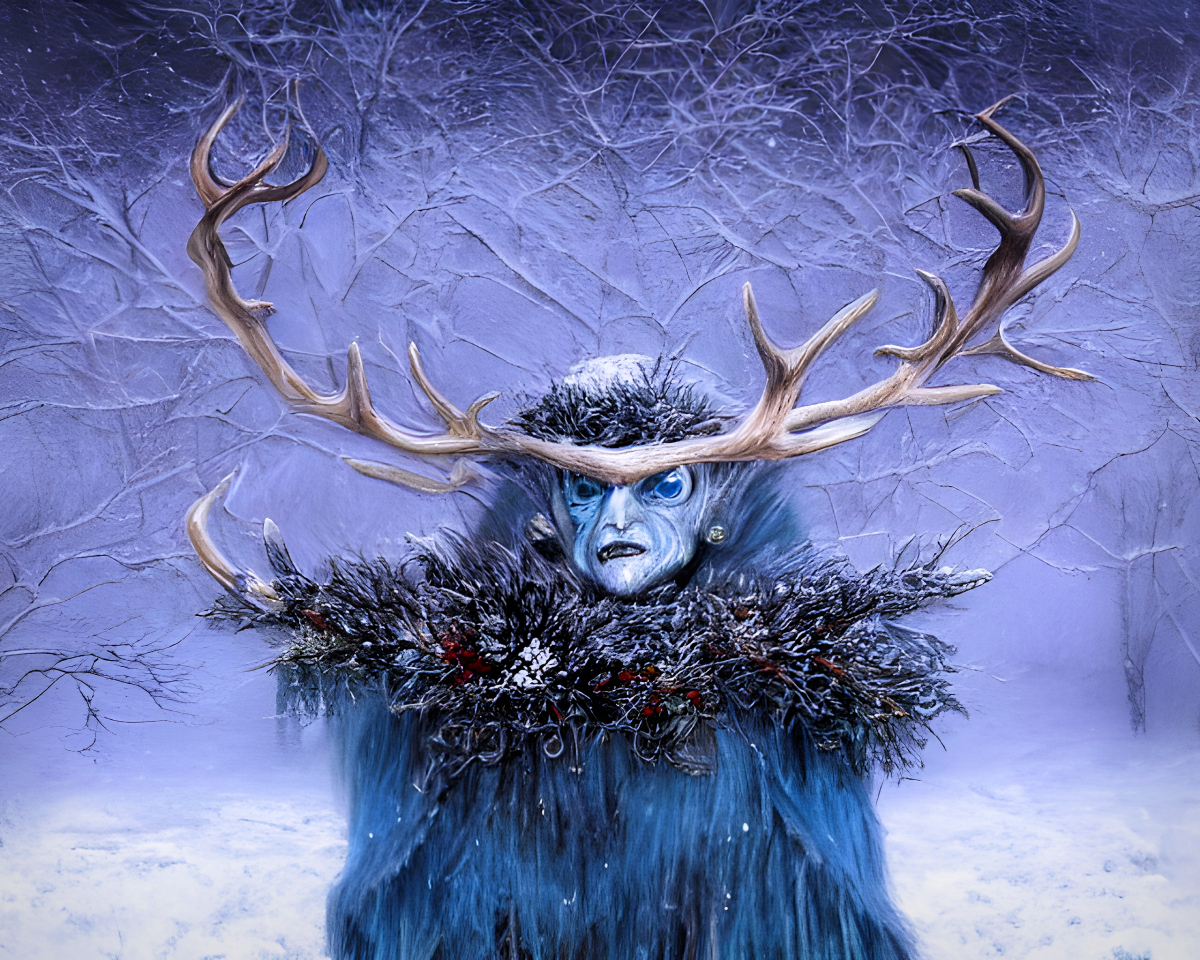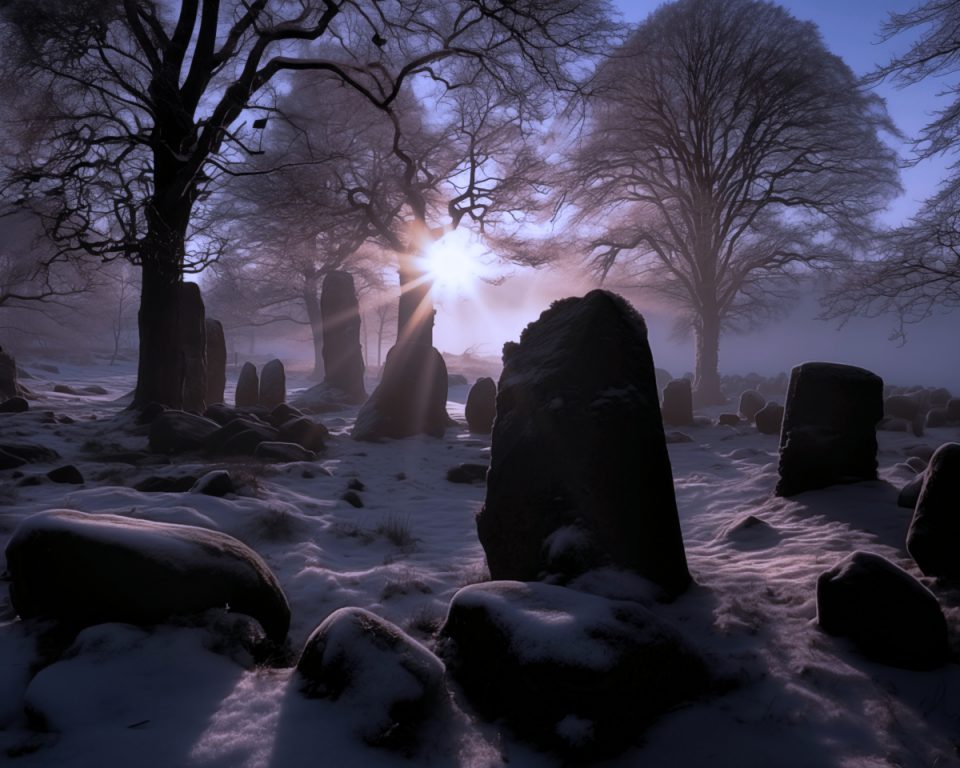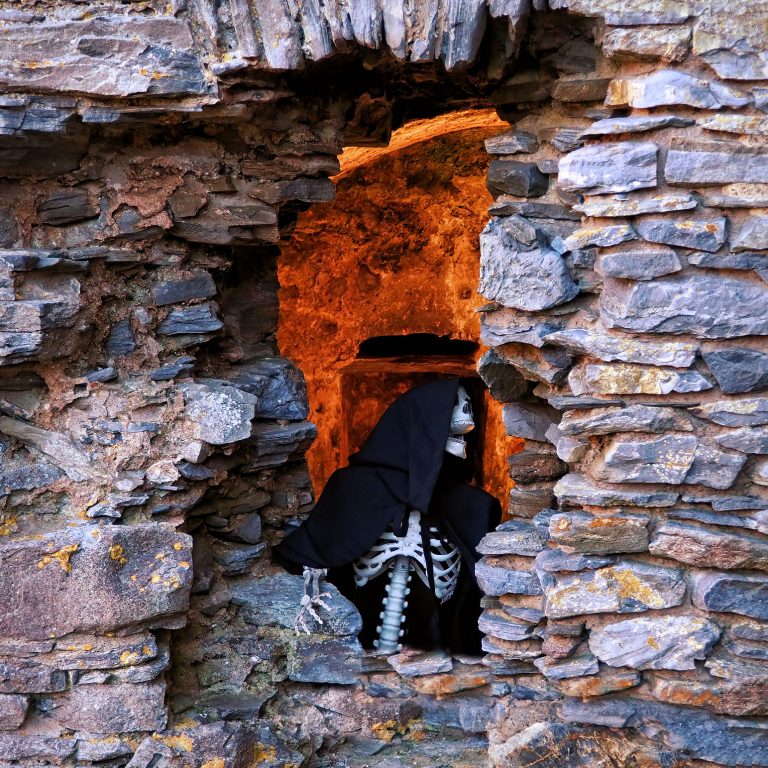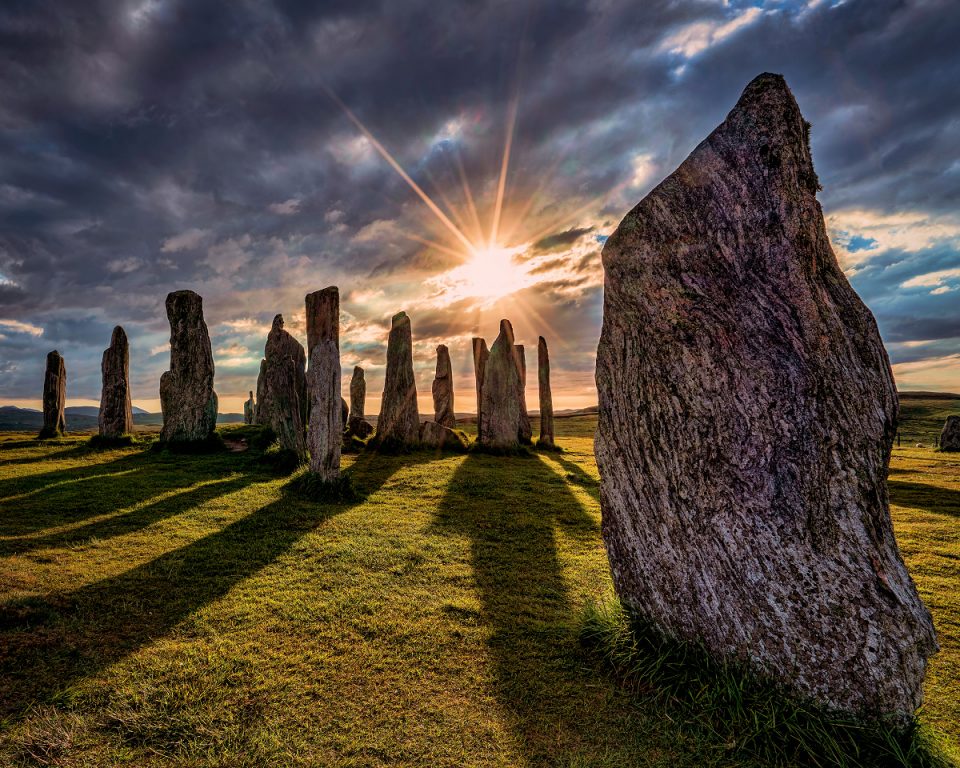The Cailleach Nollich or the Yeel Carlin is Scotland’s version of the Yule Log. This centuries old tradition, the burning of the ‘Old Woman of Winter’, is now dying and is only followed by a few who still practise the old ways.
Like all festivals, Christmas in Scotland has undergone many changes from its ban during the Protestant Reformation to the huge transformation which took place in Victorian Times with the arrival of Santa Claus, the Christmas tree, and the Christmas card. Although remnants of ancient Pagan and Christian symbols are still attached to this feast, it seems that Christmas in Scotland has been hijacked by the hyper-commercialism that is characteristic of most of the western world today.
A Journey Back in Time
Let’s travel back in time, to an age when things were slower and simpler. Imagine the approach of the Winter Solstice. Edinburgh, Scotland’s Capital, receives a meagre seven hours of daylight. Further north the daylight hours are less, with Shetland receiving less than six hours of light. Now imagine living in a world with no electricity and no central heating. Fire now becomes your lifeblood.
Fire is your source of light and heat. It is where the food is cooked, and meats and fish are smoked and preserved to sustain your family over the long winter months. As the nights grow longer, it is around the ceilidh fire that you gather with your family for entertainment. Its a place where tales are told and songs sung of ancient heroes and the supernatural, vestiges of the ancient Gods and Goddesses once worshipped by your Neolithic and Celtic ancestors. Among the lore, Cailleach or the Carlin is mentioned, perhaps the most ancient of Scotland’s Goddesses. A goddess whose identity predates the Celtic mythology of which she is a part. The memory of her deity is the merest whisper, kept alive with roots far deeper than any tree.
Burning the Cailleach Nollich
Is it any wonder that fire has played an important role in Scotland’s festivals? Fire meant life but it could also cause destruction. Fire, such as the Neid Fires at Samhain, was an integral part of Scotland’s feast days. Yule was no exception.
Imagine the eyes of the children as the mother or father of the household begin the Yuletide preparations. A log is chosen as the Cailleach Nollich, usually from birch or ash. Most likely the bark was removed there is an old Scots saying, ‘He’s as bare as the birk (birch) at Yule E’en’ (in other words having no clothes or being poor). The birch is dried and work begins, carving the face of an old woman into the wood. Alternatively, the face could be drawn on using chalk. Then, the great excitement begins on Christmas Eve with the Cailleach Nollich being placed on the fire. Sometimes the log would also be covered in evergreens and Yuletide greenery. As long as the log burnt, the feasting could continue. Therefore, it was important to get the biggest log possible.
The significance of using a birch log for the Cailleach Nollich was its association with protection and fertility. The ash is associated with protection from witchcraft and the devil.
Cooking on the Cailleach Nollich
Traditionally, the Yule Bannock and dishes such as ‘soor poos’ were cooked over the heat from the burning Cailleach Noillich. Every effort was made to find meat and eat it after the sun had set on Yule. If you didn’t, the cattle would suffer during the year that followed. It seems that there were local variations on the time that the Yule bread had to be baked.
Yeel Bread in The North East of Scotland
The Reverend Walter Gregor wrote about the traditions of bread making in the Northeast of Scotland. He describes the following as taking place at Corgarff:
A big log of wood was prepared some time on the day before Christmas called the ” Yeel Carlin ” or ” Yeel Cyarlin.” It was placed on the fire between 8 and 9 o’clock in the evening, and the baking of the ” Yeel Brehd” was begun. The meal when put into the baking trough was signed with the sign of the cross, and so were the first and last cakes. The dough of this bread was ” vrocht into the heart,” or in the way contrary to the usual way.
The cake was cut into four pieces before being placed on the ” girdle,” also contrary to the ordinary way of placing the cake uncut on the ” girdle,” and each piece or “quarter” was laid separately on the girdle. The “quarters” must not be lifted to examine if the underside was sufficiently baked lest they might be broken, which would have brought disaster on the one for whom the cake was baked. When it was supposed that the underside was fully baked, the ” quarters ” were taken off the “girdle” and placed in front of the fire till they were baked to the full. When baked they were placed on edge, two and two slantwise like the couples of a house, with one at each end. A cake, i.e., four “quarters,” was baked for each member of the household. If one’s cake broke, death would take place within the year.
Yeel Bread In Garmouth, Moray
Similarly, he wrote about the traditions around Garmouth in Moray:
In the part of Morayshire round about Garmouth the “Yeel Brehd” had to be baked before 5 o’clock in the morning, or as it was at times expressed, “afore the deel geed (went) by Binns.” There is a hill called the Binn not far from Garmouth. The devil is said to live in it at a spot named The Fairies’ Kitchen, a small level piece of ground clear of trees and bushes. He was supposed to be always early astir. Hence the origin of the saying which is still applied to one who is up betimes.
Interestingly, this association with the Devil and the Binn Hill seems to have developed because there are the remnants of a burial cairn on the hill. It seems that the locals were very superstitious about cairns and the like. One of the nearby Stone Circles is called the ‘Deil Stanes’.
Reading the Ash and the aftermath of Burning the Cailleach Nollich
On Christmas morning, the family would read the ash following the burning of the Cailleach Nollich. A foot shape pointing to the door was supposed to signal death, whereas a foot shape pointing into the room was said to herald new life.
The household would keep a piece of the burnt log throughout the year that followed. Then, come the next Christmas Eve, it would be used to light the new Cailleach Nollich.
Interestingly, in the fisher town of Buckie in Moray, the chimney would be swept in the run up to Yule and the soot saved. This year’s worth of soot was known as the ‘Deil’s breakfast’ and was served up to the devil on Christmas morning.
The Origins of the Cailleach Nollich
The word Yule comes via Old English from jol, an ancient Scandinavian word for a series of winter soltice festivities. We know that the solstices were important to the ancient peoples of Scotland. For example, the Clava Cairns and Maeshowe are aligned to the winter solstice. Calanais, on the other hand, is aligned to the summer solstice. It is believed that Celtic Druids started the tradition of the Yule log. They believed the sun stood still for twelve days in the middle of winter. During this time, a log was lit from the remains of last year’s fire. It was thought to conquer the darkness, banish evil spirits, and bring luck for the coming year. Conversely, many people believe that it began as an ancient Germanic midwinter practice. Eventually, the Pagan elements underwent a Christianised Reformulation.
Although the Christianisation of Scotland began before St Columba’s famous foray into Pictland in AD 565, the burning of the Cailleach Nollich, a nod to a Pagan Goddess, was commonplace in the Highlands at the beginning of the 20th Century.
Large scale Yule fires remained a common way to mark the season over the centuries in Scotland. Remnants of this can be seen in the Midwinter Fire Festivals in Stonehaven and Burghead.
Who was the Cailleach of Cailleach Nollich Fame?
The significance of burning the Cailleach Nollich was the hope that burning the old woman of winter would banish the cold, the darkness and the hardships of the past year. It was the welcoming in of a new beginning, Hogmanay and the start of a New Year.
But who was this old woman of the winter. On the west she was known as the Cailleach while in the east is was known as the Carlin. Cailleach in Gaelic means ‘Old Woman’ or the ‘Veiled One’. She is the winter goddess, the creator of Scotland, the Bone Mother, and the bringer of storms. She is portrayed as a one-eyed, blue-faced hag, a giantess who freezes the ground with every tap of her magical, blackthorn staff.
As a goddess she has many titles: the Cailleach, the Cailleach Bheur, Bheira, the Carlin, the Gyre Carlin, Gentle Annie, Mhor nan Fiadh (Protector of Deer), Queen of Winter, Lady of the Beasts, the Queen of witches and the Bone Mother, to name a few.
The Cailleach was a goddess who, as a personification of the seasons controlled the weather and the winter between Samhain until Beltane . During the winter months, she herded deer, resisted springtime and froze the soil with her staff. She was also considered to be the embodiment of a corn or harvest spirit.
In partnership with the Goddess Bride, the Cailleach is seen as a seasonal deity or spirit. Where Bride was ruler over the summer months, the Cailleach was said to rule unequivocally throughout the winter months.
Yuletide Wishes
As the Cailleach holds the land in her icy grip, we at Spooky Scotland are looking forward to the lengthening of the days, to the turning of the wheel of the year and the coming of spring. We wish you and yours a Joyous Yuletide and a prosperous New Year.




